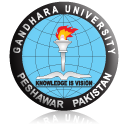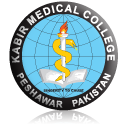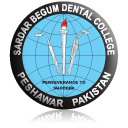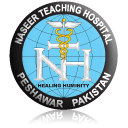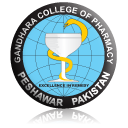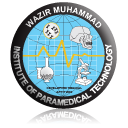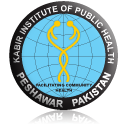1st Year
(Curriculum for All Technology)
COURSE TITLE: |
ANATOMY |
|
|
Lectures/Demonstrations : |
220+80 |
MARKS |
To introduce the students the significance of the subject of anatomy in medical science regarding its knowledge its applications and day-to-day developments in the subject
COURSE CONTENT:
- General Anatomy Anatomical terms and positions Description of tissue
- Systemic Anatomy
Systemic Anatomy includes
- Muscular skeletal system
- Gastrointestinal system
- Respiratory system
- Cardiovascular system
- Lymphatic system
- Head and Neck
- Nervous System
- Urinary System
- Reproductive System
- Endocrine System
- Special Senses
RECOMMENDED BOOKS:
Snell’s clinical Anatomy (Text Book) by Snell 7thg Edition 2000 published by Churchill Living Stone
Gray’s anatomy (Reference book) by Roger Warwick Petter L. Williams 1973 published by Langman group limited.
COURSE TITLE: |
BASIC PHYSIOLOGY |
|
|
Lectures/Demonstrations |
220+60 |
MARKS |
COURSE OBJECTIVE:
To introduce to the students the significance of the subject of Physiology in medical science with regards to its knowledge in making the other subjects of medical sciences understandable. Its applications and day to day developments in the subject of Physiology.
COURSE CONTENTS:
- Cell
- Gastrointestinal system
- Respiratory system
- Cardiovascular system
- Blood and immunity
- Nerves system
- Urinary system
- Reproductive system
- Endocrine system
- Special senses
RECOMMENDED BOOKS:
Guyton test book of Physiology (Text Book) by Guyton 1991 published by W.B Saunders company
Ganong review of Physiology (Reference Book) by Ganong 20th Edition 2000 published by Lang Medical book.
COURSE TITLE: |
GENERAL PATHOLOGY |
|
Lecturers: |
200+120 |
MARKS |
COURSE OBJECTIVE:
To introduce to the students the knowledge of the subject of Pathology regarding its needs in understanding the different domains of medical science and regarding the other applications of the subject and to come to know the recent advancements in the field of pathology.
COURSE CONTENT:
- Introduction to Pathology
- Cell Injury
- Inflammation
- Repair
- Homodynamic Disorders
- Disorders of Immunity
- Neoplasia
- Microbiology
RECOMMENDED BOOKS:
Robbin’s textbook of Pathology (Text Book) by Robbin Cottran Kumar 6th Edition 1998, Published by I.E. saunders.
Pathology illustrated (Reference Book) by AD. T Govan 1991 published by Churchill Livingstone.
COURSE TITLE: GENERAL PHARMACOLOGY
Lectures/Demonstrations : 200+50 MARKS
COURSE OBJECTIVE:
To introduce to the students the knowledge of the subject of pharmacology with regards to its importance in understand ding the other disciplines of medical science and regarding the application of the subject and to learn about the new developments in the field of pharmacology.
COURSE CONTENT:
- Introduction to Pharmacology
- Pharmacokinetics
- Pharmacodynamics
- Adverse effects of drugs
- Classification of drugs
RECOMMENDED BOOKS:
Lippincot’s pharmacology (text book) by Mycek 2nd edition 2000 published by Lippincot Raven
Katzung textbook of pharmacology (Reference Book) by Bertram Katzung 8th Edition, Published by Appleton.
COURSE TITLE: |
BIOCHEMISTRY |
|
|
Lectures/Demonstrations |
160+40 |
MARKS |
COURSE OBJECTIVE:
The induction of knowledge subject of biochemistry to student regarding its importance in understanding the other domains of medical science and regarding the applications of the subject and to know about the recent developments in the field of biochemistry.
COURSE CONTENTS:
- Introduction
- Carbohydrate
- Proteins
- Lipids
- Enzyme
- Vitamins
- Nutrition food and dietetics
- Metabolism
- Body fluids
- Acid base balance
- Minerals
RECOMMENDED BOOKS:
Harper’s textbook of Biochemistry (Text Book) by Bertram Katzung 1992 published by Appleton Lange.
Biochemistry for Paramedics by Dr. Khalid Mehmood 2005 published by UB agency Peshawar.
COURSE TITLE: |
ISLAMYAT |
|
|
Lectures/Demonstrations |
70 |
MARKS |
COURSE OBJECTIVE:
- To educate students regarding basic concept of Islam
- To educate students regarding Islamic influence in the world
- To educate the students regarding Islamic Medical Ethics & Contribution of the Muslims in Medicine, Science & Technologies.
COURSE CONTENTS:
Holy Quran and Sunnah
- Holy Quran
- Introduction
- Importance and characteristics
- Sura-e-Hujaraat with translation
- Sura-e-Al-Furqan: Verses 63-77 with translation and explanation
- Sunnah
- Importance of Sunnah
- Twenty selected Hadith with translation
(Mention in Islamiat Compulsory for degree classes, published by:
Allama Iqbal Open University)
Fundamental Doctrine of Islam
- Islam with reference to Holy Quran & Hadith
- Tawheed (Oneness of Allah)
- Prophethood
- The day of Judgment (Akhrit)
- Salat & Nimaz (Abadaat)
- Saum (Fasting)
- Zakat
- Hajj
- Jehad
Life of Holy Prophet
- study of the life of the holy Prophet & Seerat
- life of the Holy Pro[het at Maka from birth to Hijra (Migration to Madina)
- Method of Preaching & difficulties
- life of Holy Prophet at Madina
- amicable Accords (Mowkhat)
- treaty of Madina (Misaq-e-Mukarama)
- conquest of Maka Al-Mukarama)
- hajat-ul-wida
The Ethical View of Islam & Characteristics Islamic Cultural
- Character Building
- The Concept of Ethics
- The Moral Values: Truthfulness, tawakal, Taqwa, Fulfillment of Promises, Simplness, the steam of Prents and Guardians, Behaviorism Y& Broadness.
- Islamic Society: Kisb-e-Halal, Human Dignity, Social justice Addle-e- Shoora
Influence of the Islamic civilization
4.4 Panacea of our problems
4.6 Our future, unity, political stability
Islamic Medical Ethics
Contribution of the Muslims in Medicine, Science and Technology
Note: while keeping the Islamic values and basic Characteristics of Islamic Society the proper guideline may be provided in such a way that should be applicable in business and trade.
RECOMMENDED BOOKS:
Islamiat Compulsory, Islamabad, Allama Iqbal Open University, Islamabad
M.D. Zaffar, Islamic Education (Compulsory) Lahore Aziz Book Dept. Urdu Bazar.
COURSE TITLE: |
PAK STUDIES |
|
|
Lectures/Demonstrations: |
70 |
MARKS |
COURSE OBJECTIVE:
To introduce to the student the significant of Pak Study B.Sc level course.
COURSE CONTENTS:
I Chapter One Ideology of Pakistan II Chapter Two
Background of ideology of Pakistan
- Reformation movement
- Educational movement
- Political movement
Movement of Pakistan (Since Allama Iqbal Address at Ala Bad 1930 till 14th August 1947)
Establishment of Pakistan (Political, Social financial Problems)
Constitutional and Political Developments in Pakistan
Geographical condition of Pakistan
Pakistan and Muslim World
RECOMMENDED BOOKS:
Pakistan Studies Compulsory for Degree Courses by Dr. Noshaad Khan
COURSE TITLE: |
COMPUTER EDUCATION |
|
Lectures/Demonstrations |
39+117 |
MARKS |
COURSE OBJECTIVES:
To introduce to the student the significant for computer definitions, history, types and component, hardware and software application
COURSE CONTENT:
Introduction Definition of computer History of computer
Classification of computer Components of computer
Hardware and Software Physical components of computer Logical component of computer System software
Application software Storage devices Magnetic storage devices Optical storage devices Memories
Application software Microsoft word Microsoft power point Microsoft excel Microsoft power point Microsoft access Networking
Definition of networking Types of networking Internet
RECOMMENDED BOOKS:
Fundamental of I.T concept by Nayyar Kanwal by CECOSE University Teacher’s notes
2ND YEAR B.SC ANESTHESIA
COURSE TITLE: ANATOMY RELATED TO ANESHTESIA
LECTURES/DEMONSTRATIONS: |
190 + 114 |
MARKS |
|
COURSE OBJECTIVE:
To introduce the students the significance of the human respiratory anatomy related to the anesthesia and his application, students the significance of human Nerves System related to Anesthesia, students the significance of the human Cardiovascular System Anatomy related to the Anesthesia and its application of applied works.
COURSE CONTENT:
Definitions and structures of the respiratory system Mouth, nose, pharynx, larynx
Relation of larynx, cartilages of larynx, ligaments, muscles, blood supply, lymphatic drainage and nerves supply
Trachea and bronchial tree
Division, relations, blood supply, nerve supply Lymphatic drainage
Lungs
Structure, lobes, blood supply, nerve supply, Lymphatic drainage Mediastinum
Parts, contents of mediastinum Nerve system
- Brain
- Spinal Cord
- Menegies
- Vertebral Column
- Spinal Nerves
- Cranial verves
- Autonomic N/System (Sympathetic and Para Sympathetic N/S Cardiovascular system
- Definition and Structures of the Cardiovascular System Anatomy.
- Heart
Valves Conducting system
- X.Ray marking of heart border
- Congenital abnormalities
RECOMMENDED BOOKS:
Clinical anatomy by Snell 7th Edition 2000 by Churchill Living Stone
Referral Book
Gray’s anatomy by Roger War Wick Peter L. William in 1973 by Long Man group Ltd
COURSE TITLE: Physiology Related to Anesthesia
LECTURES/DEMONSTRATIONS: |
190 + 114 |
MARKS |
|
COURSE OBJECTIVE:
Students are expected to understand various physiological mechanisms, principles, and application these, in anesthesia practice. To demonstrate abilities to maintained the
Various physiological variables with in normal range.
COURSE CONTENTS
Heartrateregulation,cardiacperformance,coronarycirculation,cardiacoutputandits regulatingfactors,bloodpressure,heartsound,pulse,ECG,mechanismofrespiration,controlof respiration,lungvolumesandcapacities,transportofrespiratorygases,respiratoryreflexes, hypoxia,artificialrespiration,formationandcirculationofcerebrospinalfluid(CSF),intracranial pressure,Receptors,muscles,neuromuscularjunction,Synapses,Acidbasebalance,Diuretics, mechanismofvomiting,liverphysiologyandanesthesia,pancreasphysiologyandanesthesia, gall bladder, thermoregulation, pain mechanism,
PRACTICALS
- Recording of blood pressure and pulses rate normal & following exercise
- Electro Cardio Gram (ECG) tracing on a normal and pathological conditions
- Auscultation of heart sound sand interpretation
- Spirometry and description of normal and pathological findings
- Different pulse and measurement
- Understand pain scale and its application
Pharmacology andphysiologyinanesthesia.K.,Robert,.Stoelting,.Hiller,.C,.Simon,.2ndedition.
Textbook ofMedical physiology. Guyton &Hill,.12thedition.
Fundamentalofanesthesia.Smith,.Tim,. Colinpinock,.Ted line,.Johan,.Robert,.3RDedition.
COURSE TITLE: ANESTHESIA EQUIPMENT
Lectures/Demonstration: 228+152
Course objective:
- Students are expected to understand the working principles various tools use for anesthesia provision, to ensure safe practice.
- To demonstrate abilities in managing technical fault arise intra‐operatively and correct the calibration of different anesthetic instruments/equipment.
Course contents:
Anesthesiamachineitsdifferentparts,workingprinciples,medicalgassupplydevices,vaporizers, pulseoximeter,facemasksandlaryngoscope,breathingcircuts,anesthesiaventilatorand workingprinciples,monitoringdevices,manualresuscitationbags,defibrillatoranditsworking principles,methodsofautoclaving,glucometer,nervestimulator,laryngealmaskairway,endo trachealtubes(ETT),airways(oralandnasal),suctionmachine,infusionpump,reservoirbags, resuscitatorbags,thermometer,spagymometer,stethoscope,oxygenpuritymeter,Operation theatertable,flexibleendoscope,intravenouscannulas,spinalneedle,epiduralcatheter,Magill gag,Magill incubatingforceps, latest technology.
Practical
- Arrangement of anesthesia Machine
- Anesthesia Machinesafetysystem
- Sterilization of anesthesia equipment
- Arrangement of anesthesia breathing circuits
- Use of stethoscope and blood pressure apparatus
Recommended BOOKS
- Anesthesiaequipmentprinciples and applications.Ehrenwerth,.jan,.Eisenkraft,.james,.Berry,.james,.2ndedition.
- Manualofanesthesia.K,.Arun,.4thedition.paulJaypee brothersmedical publisher(p) Ltd.
- EssentialofAnesthesiaequipment.Sakaih,.Bahalal,.&Stacey,.Simon,.3rdedi.
- Clinicalanesthesiology.Morgan &Mikhail’s,.5THedit.
COURSE TITLE: ZONES OF INTEREST TO ANESTESIA,
LECTURES/DEMONSTRATIONS:228+154 MARKS
COURSE OBJECTIVES:
To introduce to the students the significance of human different zones to the Anesthesia point of views and anesthesia machine operating and practical work in general surgery, urology and ENT OT
COURSE CONTENTS:
- Diaphram
- Intercostals Space
- Antecubital Fossa
- Thorasic Inlet
Use of Anesthesia machines, different circuits, drugs prepation & labling Use of stethoscope for COPD and hearts beats and hearts murmer; use of BP apparatus, techniques of anesthesia, different types of Lryngoscopes & their blades, different types of Endotrochial tubes, Embu beg, maintenance of I/V lines
RECOMMNEDED BOOK:
Clinical anatomy by Snell 7th edition 2000 by Churchill living stones
Clinical anesthesiology by Morgon publisher MC Graw health 3rd edition in 2005 Text of anesthesia by Alan R. Atkin by Churchill living stone 4 edition in 2005
3rd YEAR B.SC ANESTHESIA
COURSE TITLE: Anesthesia for Urology, Orthropedics & General Surgery
LECTURES/DEMONSTRATIONS: |
190+114 |
MARKS |
|
Course objective:
Students are expected to understand relevant principles, applyknowledge in practice, and to demonstrate abilities in theanesthesiamanagement of orthopedic, urological and generalsurgical procedure.
Course Content
Pre‐operativeassessment,pre‐existingmedicalproblems,physicalexamination,choiceof anesthetictechnique,regionalanesthesia,intraandpost‐operativeanalgesia,specialpositioning fororthopedicsurgery,riskofperipheralnerveinjury,bloodloss,intraoperativehypotension, venousthrombosis,spinalcordinjury,trachealintubation,respiratoryconsideration, cardiovascularconsideration,succinylcholinehyperkalemia,temperaturecontrolandminting spinalcordintegrity,kneearthroscopy,ankleandfootsurgery,pediatricorthopedicsurgery, tourniquetapplication,useofmethylmethacrylate,fiberopticcystoscopy,transurethral resectionofprostate,TURPsyndrome,transurethralresectionofbladdertumor,nephrectomy, laparoscopic urological surgery, renal transplant
Practical
- Mentoring of aged patient in particular
- Positioning of patient in prolong Surgery
Recommended BOOKS
- Evidence‐basedPracticeofAnesthesialogy.Fleisher,.A,.lee,.3rdedition.
- Textbook of Anesthesia. Aitkenhead,.Alan,.R,. 5THedition.
- Clinical anesthesiology. Morgan &Mikhail’s,.5THedit.
- Anesthesia and co‐existing diseases. Roberta L.Hines,.6THedition.
- A practice ofanesthesialogy.Healy,.E,.J,.Thomas,.7thedition.
- Fundamental of Anesthesia. Smith, .Tim,. Pinock,.Colin,.line,.Ted,.Johan ,.Robert,.3rdedition.
COURSE TITLE: Anesthesia for Pediatric & Obstetric Surgery
LECTURES/DEMONSTRATIONS: |
190+114 |
MARKS |
|
Course objective:
Students are expected to understand relevant principles, applyknowledge in practice, and to demonstrate abilities in theanesthesiamanagement of Obstetric and pediatric surgeries.
Course Content
Difference between normal and pregnant lady, anesthesia for non‐obstetric during pregnancy, risk for anesthesia, precaution to take, regional anesthesia, epidural analgesia, anesthesia for pre‐eclampsia,APGARscore,induction,maintenanceandrecovery,resuscitationofthenew born, manual removal of placenta, APH, PPH, rupture uterus, ectopic pregnancy, theater setting forpediatric,checklist,premedicationandintubation,reversalandextubationproblem,pain managing.
Practical
- Placement of N/G tube
- Positioning in c/section
- Airway management gadgets and its arrangement
- Spinal trolley setting
- Medical gases supply surety
- Adjustment of ventilator as per patient minute ventilation
- I.v cannultion in children
- Selection of ETT size as per patient age
- Safety measure incommunicable diseases
- Advance life upport drill
Recommended BOOKS
- ObstetricAnesthesiaPrinciplesandPractice.
- David,.H,.chestnut,.Cynthia,.A,.Wong,.Lawrence,.C,.Tsen,Warwick,.D,.Nagan,.kee,.5thedition.
- Obstetric Anesthesia.Brenda,.A,.Buckin,.David,.R,.Gambling,.& David,.wlody,.
- A practice of anesthesia for infants and childern.Cote,.J,.charles,.Leman,.Jerrold
&Anderson,.Brian,.5thedition.
- Evidence‐BasedObstetricAnesthesia.Halpern,.H,.Stephen,.&Douglas,.M,.Joanne,.3rdedition.
- Handbook ofPediatricAnesthesia.Houck,.J,.Philipp.Manon,.Hache,.&Sun,.S,.Lena
COURSE TITLE: Pharmacology Related to Anesthesia
LECTURES/DEMONSTRATIONS: |
190+152 |
MARKS |
|
Course objective:
Students are expected to understand pharmacodynamics and kinetics of anesthetic agents and its application in anesthesia practice.
To demonstrate abilities of preparation of dosages as per requirement of the individual and manage complications arise as consequences of anesthetic agent administration.
Course Content
Narcoticanalgesic,pharmacokinetics,pharmacodynmics,Opioidssreceptors,Classificationof opiods,Non‐narcoticanalgesics,Localanestheticsdrugs,intravenousanestheticagents, inhalationalanestheticagents,musclerelaxants,reversalagents,anti‐emeticdrugs,anxiolyticdrugs, emergency drugs.
Practical
- Preparation and dosage of drugs relevant to anesthesia
- Construct emergency trolley
- color of the drugs and variation
Recommended BOOKS
- Anestheticpharmacology.Evers,.Alexs,.&Maze,.Mervyn,.kharasch,.D,.even,.2ndedition.
- Principles and practice of pharmacology for anesthesia.Calvey,.Norman&William,.Norton,.5thedition.
- Textbook ofAnesthesia.Aitkenhead,.Alan,.R,. 5THedition.
- Lippincott'spharmacology.Howland,.Richard,.D,.&Mycek,.Mary,.J,.3rdedit.
- Clinicalanesthesiology.Morgan &Mikhail’s,.5THedit.
COURSE TITLE: Anesthesia For ENT& EYE Surgery
LECTURES/DEMONSTRATIONS: |
190+152 |
Course objective:
Students are expected to understand relevant principles, applyknowledge in practice, and to demonstrate abilities in the anesthesiamanagement of eye surgery and theuse oflatesttechnology. Theseinclude:
Students are expected to understand relevant principles, applyknowledge in practice, and to demonstrate abilities in the anesthesiamanagement of ear, nose and throat (ENT) surgery.
Course Content
Understanding, Anatomy and physiology of extremes of age, Anatomy of orbit and contents, Physiology of intraocular pressure, Ocular perfusion, Eyereflexes (oculo‐cardiac,oculo‐respiratory,oculo‐emetic), extraocular muscles, blood vessels, lacrimal apparatus, Local anesthetic agents for eye surgery, Other drugs for eyesurgery, for example, topical agents, vasoconstrictors, mydriatics, miotics, and agent store duce intraocular pressure. General anesthesia for eye surgery including: examination under anesthesia, Laser eye surgery, Intraocular surgery, extra‐ocular surgery, retinal detachment, Plasticand orbital surgery, emergency eye surgery and use of suxamethonium in penetrating eye injury, Monitoring, Postoperative care, management of nausea an dvomiting, principles of regional retrobulbar and peribulbar block and choosing between general and regional anesthesia techniques, Sedation for eye procedures, principles of anesthesia for day, Pediatric considerations.
Pre‐operativeassessment,pre‐existingmedicalproblems,physicalexamination,choiceofanesthetictechnique,regionalanesthesia,intraandpost‐operativeanalgesia,specialpositioningfororthopedicsurgery,riskofperipheralnerveinjury,bloodloss,intraoperativehypotension,venousthrombosis,spinalcordinjury,trachealintubation,respiratoryconsideration, cardiovascularconsideration,succinylcholinehyperkalemia,temperaturecontrolandmintingspinalcordintegrity,kneearthroscopy,ankleandfootsurgery,pediatricorthopedicsurgery,tourniquetapplication,useofmethylmethacrylate,fiberopticcystoscopy,transurethralresectionofprostate,TURPsyndrome,transurethralresectionofbladdertumor,nephrectomy, laparoscopic urological surgery, renal transplant
Practical’s
- Pre‐operative preparation of the patient
- Equipmentpreparation
- Airway devices
- Monitoring devices adjustment
- Labelingofanesthesia drugs
- Preparation of patient
- Preparation of equipment
- Airway management
- Drugs preparation
- Post‐op airway management
- Post‐op bleeding management in tonsillectomy
- Patient positioning
Recommended BOOKS
- Textbook of Anesthesia. Aitken head,Alan, 5THedition.
- Clinical anesthesiology.Morgan &Mikhail’s,.5THedit.
- Anesthesia and co‐existing diseases.Roberta L.Hines,.6THedition.
- Evidence‐basedPracticeofAnesthesialogy.Fleisher,.A,.lee,.3rdedition
- Apractice ofanesthesialogy.Healy,.E,.J,.Thomas,.7thedition.
- Fundamental of Anesthesia. Smith,Tim,.Pinock,Colin,.line,.Ted,.Johan ,.Robert,.3rdedition.
- Opthalmicanesthesia.C.Dodds,G.Fanning.C.kumar.
- Anesthesia forophthalmicsurgery.Mostafa,.Morsy,.Sobhy.
- Anesthesia and co‐existing diseases.Roberta L.Hines,.6THedition.
- Evidence‐basedPracticeofAnesthesialogy.Fleisher,.A,.lee,.3rdedition.
- Textbook ofAnesthesia.Aitkenhead,.Alan,.R,. 5THedition.
- Clinicalanesthesiology.Morgan &Mikhail’s,.5THedit.
- Apracticeof anesthesialogy.Healy,.E,.J,.Thomas,.7thedition.
- Fundamentalof Anesthesia.Smith,.Tim,.Pinock,.Colin,.line,.Ted,.Johan ,.Robert,.3rdedition.
COURSE TITLE: Different Types of Anesthesia
LECTURES/DEMONSTRATIONS: |
228+152 |
Course objective:
Students are expected to understand various anesthetic procedures, build specific anatomical ground need for local blocs, instill the confidence to handle problems and overcome the complication born as consequences of various anesthetic procedure, to know about the materialuse invarious blocs and anesthetic procedure.
Course Content
Definition of anesthesia,Regionalanesthesiaera,Intravenousanesthesiaera,Modernanesthesia era, ,General anesthesia, retro grade tracheal intubation, total intravenous anesthesia, anesthesia with ketamine, sub arachnoid ande pidural anesthesia and analgesia, bier,sblock, axillary block, ankleblock,caudalblock(adultandpediatric),centrallineplacement,cervical plexusblock, digitblock,femoralblock,penileblock,sciaticnerveblock,supraclivicalblock, regional anesthesia for thorax, fieldblock, surface anesthesia
.
Practical
- Understandingvariousspinalneddles
- Use of localanesthetic agents and quantity require as per the need
- Enlist the complications observedby the candidate during theirclinical rotation
- Expert in the reliabilityof different instrument in use
Recommended BOOKS
- Peripheralnerveblocks.Hadzic,.admir,.2ndedition.
- Ultrasoundguided regional anesthesia.Grant,.A,.stuart,.&Auyong,.B,.david.2ndedition.
- Evidence‐basedPracticeofAnesthesialogy.Fleisher,.A,.lee,.3rdedition.
- Textbook ofAnesthesia.Aitkenhead,.Alan,.R,. 5THedition.
- Clinicalanesthesiology.Morgan &Mikhail’s,.5THedit.
- Apracticeof anesthesialogy.Healy,.E,.J,.Thomas,.7thedition.
FundamentalofAnesthesia.Smith,.Tim,.Pinock,.Colin,.line,.Ted,.Johan ,. Robert,.3rdedition
COURSE TITLE: Coexisting Disease & their Management
LECTURES/DEMONSTRATIONS: |
190+114 |
Course objective:
Students are expected to understand common diseases and its negative impacts in anesthesia practice.
To demonstrate abilities which minimize morbidity and mortality in such a patients.
Course Content
Diabetes Mellitus, Hypertension,I schemic heart disease, Arrhythmia & heartblocks, Obesity, Shock, Chronic renalfailure, chronic liverd isease/ failure, hematological disorder, Epilepsy, cerebral vascular accident(CVA), bronchialasthma, Thyroiddisease, pheochromocytoma, COPD, pneumonia, upper respiratory tractinfection (UTI), myastheniagravis, pulmonaryedema, pregnancy associated diseases, renaldisorder, (fluidandelectrolyteimbalance,shiftedtocriticalcare), Respiratory tractinfection, acromegaly,rheumatoidarthritis,alcoholabuse,obstructivesleepapnea,hemophilia,spinalcorddisorder.
Practical
- Calculate dosage of insulin for patient intra‐operatively
- Determine ischemic heart diseases through ECG interpretation.
- Setting of ventilator modes for various respiratory diseases
- Compilation of data related to blood disorders
- Collection of electrolyte disturbance data in various renal diseases.
- Collection of data relevant to liver abnormal Medical Biochemistry
Recommended BOOKS
- Anesthesiaand co‐existing diseases. Robertal.hines,.6thedition.
- Evidence‐basedpracticeofanesthesialogy.fleisher,.a,.lee,.3rdedition.
- Textbook ofanesthesia.Aitkenhead,.alan,.r,.5thedition.
- Clinicalanesthesiology.Morgan &mikhail’s,.5thedit.
- Apracticeof anesthesialogy.healy,.e,.j,.thomas,.7thedition.
- Fundamentalofanesthesia.Smith,.tim,.Pinock,.colin,.Line,.ted,.johan ,.robert,.3rdedition.
4th YEAR B.SC ANESTHESIA
COURSE TITLE: Biostatistics and Research Methodology
LECTURES/DEMONSTRATIONS: |
114+38 |
COURSE SUBJECTIVE:
Introduction the students a significance of research methodology to the students foundation, concept of measurement, design clinical research and health system research.
To introduce to the student the significance of bio-statistics their topic in univariate statistics means basic concept, describing and exploring data, normal distribution, sapling distribution and hypothesis testing, basic concept of probability and categorical data CH and application of statistics and social research.
COURSE CONTENTS:
PART-1 FOUNDATION
Introduction to research (in simple term and a scientific term), concept of research, why do need research, advantage of research, identification of research need and its qualities, component of research, ethical and legal aspect of research and objective of research (definition, purpose, structure)
PART-2
(A) SELECTION OF TOPIC
The criteria points of prioritization of topic
1. Relevance ii. Avoidance of duplication iii. Physibility iv. Political acceptability v. Applicability vi. Cost efficiencies
vii. Ethical consideration and scales for rating research topic mentioned
above
WORK PLAN
its contents, how to developed a work plan, what factor should be kept in mind while preparing research work plan
© BUDGET REQUIRED FOR RESEARCH WORK
Why it is needed, wok should be taken in to consideration, literature searching, statistical help, material, type of manuscript, printing of manuscript for submission and postage
PART-3
CONCEPTS OF MEASUREMENT
Principals and reliability of measurement, errors and sources of measurement, types of measurement, measure of disease frequency and screening (introduction, validity and screening test)
DESIGNING CLINICAL RESEARCH
Studies design (introduction, selection of design), research questionnaire, validity and reliability of research finding, confounding factors, strategies to deal with threats to validity.
Biostatiscs
Topics in univariate statistics
- basic
- Introduction
- important terms
- senses
- method uses for taking sensus, information collection during sensus, method of estimating the population of any year
- measurement scale
- describing and exploring data
- measures of central tendency and variability
- health statistics (proparation, ration, rate)
- percentiles, quartiles and deciles
- normal distribution
- the standard normal distribution SND
- using tables of SND
- measures related to ‘Z’ scores
- sampling distribution and hypothesis testing
- basic concepts of probability
- data collection (purpose and technique)
- categorical data and neumerical data application of statistics in social research percentages, measure of central tendencies
- means, Meidan and Mode
Quatile, decile and percentile
- HYPOTHESIS TESTING
- SAMPLING
COURSE TITLE: Anesthesia for Neurosurgery And Geriatric Surgery
LECTURES/DEMONSTRATIONS: |
190+114 |
Course objective:
Students are expected to understand relevant principles, apply knowledge in practice, and to demonstrate abilities in the anesthesia management of neuro surgery, emergency and geriatric.
Course Content
Glasscowcomascale,premedication,investigation,checklistofequipemnt,inductionof anesthesia, use of reinforce ETT, positing in neurosurgery, intracranial pressure, air embolism, reversal of the patient, transferring to ICU, resuscitation of shock patient and their circulatory management, rapidsequenceinduction,physiologyofaging,diseasesofaging,nervoussystem, geriatric pharmacokinetic and pharmakodynamic, nervous system dysfunction,
Practical
- Setting and maintenance of OT table
- Ensure proper I.V line
- Use of sevoflurne vaporizer in neurosurgery
- Exertion of cricoidpressure in emergency surgery
- N/Gtube placement
- Blood transfusion
- Arrangement of colloid and crystal loid fluid
- Maintenance and ensure availability of defibrillator
- Urethral catheter placement
- Suction machine function surety
- Labeling of drugs and dosage preparation in aged patient
Recommended BOOKS
- AnesthesiaEmergencies.Ruskin,.J,.keith,.&Rosenbum,.H,.stanley.
- A Practical Approach to Anesthesia for Emergency surgery.Manju,.N,.Gandhi,.Malde,.D,.Anila,.Amala,.G,.kudalkar,.Karnik,.S,.Hemangi.
- ClinicalAnesthesia inNeurosurgery.Frost,A,.M,.Elizabeth,.2ndedition.
- AppliedGeriatric Anesthesia.Paul,.kumar,.Arun,.7thedition.
COURSE TITLE: Anesthesia for Head Neck And Maxillofacial Surgery
LECTURES/DEMONSTRATIONS: |
228+152 |
Course & Objectives
Students are expected to understand relevant principles, apply knowledge in practice, and to demonstrate abilities in the anesthesia management of dental, head and neck surgery
Course Content
Out patient dental procedures; sedation and general anesthesia, In patient dental surgery, Dental procedures on the mentally handicapped, Dental procedures on patients with bleeding disorders, Oral surgery, Fractured jaw, Maxillary fractures according to the LeFort, tracheostomy classification, Dentalsepsis, Pre‐operative air way assessment. Management of anesthesia for major maxillofacial surgery, which may involve prolonged anesthesia, major blood loss, hypothermia and multiple procedures, Management of anesthesia for facial trauma: emergency andsemi‐elective, including fractured jaw and maxilla Management of anesthesia for cancer, plastic and cosmetic surgery on the face, head and neck, including surgery for cleft palate. Thyroidsurgery,Stabilizationof thyroid and parathyroid disorders, post‐op,thyroidstorm management, Sedationf or head and neck procedures, Post‐operative care.
Practical
- Nasal intubation
- Observation of tracheostomy
- Airway management inmaxillo facial patient
- Post‐opmonitoringand airway care
- Useof equipment indentalanesthesia
- Local blockobservation
Recommended BOOKS
- Anesthesia for oral and maxillofacialsurgery.shaw,.Ian,.kumar,.chandra,.&Dodds,.christopher,.3rdedition.
- Handbookof localanesthesia.Malamed,.F,.stanely,.6thedition.
- Clinicalanesthesiology.Morgan &Mikhail’s,.5THedit.
- Textbook ofAnesthesia.Aitkenhead,.Alan,.R,. 5THedition
COURSE TITLE: Anesthesia for Cariothorasic Sugery
LECTURES/DEMONSTRATIONS: |
190+114 |
Course & Objectives
Students are expected to understand relevant principles, apply knowledge in practice, and to demonstrate abilities in the anesthesia management of cardiothoracic surgery.
Course Content
NYHA classification, arrhythmias, angina, dysponea, echocardiography, angiography, monitroing
And preparation, care and use of arterial and venous line, anesthesia for open heart surgery, transport toI CU and its management, chest tube management, pulmonary function test, pre‐ operative preparation and medication, checklist, use of double lumen tube, monitoring and pain management, extubation and transferring to ICU, sore throat, nausea and vomiting, neurological complication, neurological complications, ocular and auditory complication, head ache and backache and vascular complication.
Practical
- Perfusion machine and its significance for anesthesia
- Cardiologic drugs and dosage
- Infusion pump and its significance
- Double lumen tube and its use
- Need for one lung ventilation
- Reducing dead space in anesthesia circuit
Recommended BOOKS
- Cardiovascularandthoracicanesthesia.Gothard,.john,.Amdrea,.kelleher& Haxby,.eliuabeth,.2ndedition.
- Anesthesiafor cardiac surgery.DiNardo,.A,.james,.&Zvara,.A,.David,.3rdedition.
- Pediatriccardiac anesthesia.Coral,.I,.lake,.&Peter,.D,.Booker,.4thedition.
- Cardiacanesthesia.jr,.Hensely,.A,.Frederick,.Martin,.E,.Donald,.& Glenn,.p,.Gravlee,.5thedition.
- Thoracicanesthesia.Kaplan,.A,.joel,. &Slinger,.D,.peter,.3rdedition
COURSE TITLE: Critical Care
LECTURES/DEMONSTRATIONS: |
152+114 |
Course & Objectives
Students are expected to understand various critical cardiovascular situations, categorize the patient, access critically ill patient, and know about pharmacological intervention‐mechanical procedure necessary to stabilize the pumping system of the humanbody.
Course Content
An introduction to critical care, Shock, Resuscitation in intensive car an operation theater, Cardiovascular monitoring in critical care, Cardiovascular investigation nf the critically Ill, Hematological Aspects of cardiovascular criticalcare, Cardiovascular support Pharmacological, Arrhythmias, Mechanical heart failure therapy, Care of the high risk patient undergoing surgery ,Common complications of cardiovascular critical illness, Acute coronary syndromes and myocardial infarction, Cardiogenic shock, Aorticdis section, Emergency management of cardiac trauma, Hypertensive crises, Endocrine problems and cardiovascular criticalcare, fluid and electrolytes, acid and base balance
Practical
- Assessment of shockand its types
- Assessment of arrhythmias
- Management of shock
- Management of arrhythmias
- Management of Cardia carrest
- Management of acute Myocardial infarction
- Management of Hypertensive crisis
- Analysis of arterial blood gases
- Management of Cardiac trauma and aortic dissection
Recommended BOOKS
- Principlesofcriticalcare.Hall,.schmidt,.andwood,s,.4thedition.
- Principleofcriticalcare.Farokh,.erach,.udwadia,.3rdedition.
- Criticalcaremanual.wilson,.francis,.robert,.2ndedition.
- CardiovascularCriticalCare.MarkJ.D.Griffiths,.JeremyJ.CordingleyandSusanna.,010BlackwellPublishingLtd.
- Rosenemergency medicine manual.Adams,.Barsan,.Biros,.
COURSE TITLE: Physics & Echocardiography related to Anesthesia
LECTURES/DEMONSTRATIONS: |
152+114 |
Course & Objectives
- To describe the basic concepts of EKG
- To recognize the basic electro‐physiology using EKG
- To compute different basic technical ECG abnormalities
- To infer different types of arrhythmias
- To identify different heart pathologies on the basis of EKG
- To relate the EKG abnormalities with the heart and lung pathologies
Course Content
Conduction problems. Heart rhythm, wave abnormalities (P,QRS,T), Atria land Ventricular Hypertrophy,T Wave Abnormalities, Electrical Axis and Fascicular Block,, Conditions, Arrhythmias, ECG of different Myocardial infarctions, EKGof Different congenital as well as acquired Heart pathologies; Aortic disease, valvular diseases, Pericardial disease, how to use the ECG.
Practical
- Finding heartrate,Rhythm,axisandintervals
- Different types of EKG waves and correlation with different heart chambers
- Interpretation of different type of arrhythmias
- Interpretationof Myocardial infarction
- Interpretationofcardiac chamber hypertrophy andenlargements
- InterpretationofCardiac myopathies
- Interpretationofvalvular pathologies
- Interpretation of different aortic pathologies
Recommended BOOKS
- ECG MADEEASY BY JOHAN R.HMAPTON
- EKGBYDALEDUBIN6THEDITION
- ECGMADEEASYBYJHONR6THEDITION
- RAPIDECGINTERPRETIONBYMR.M.GABRIELKHAN3RDEDITION
|

